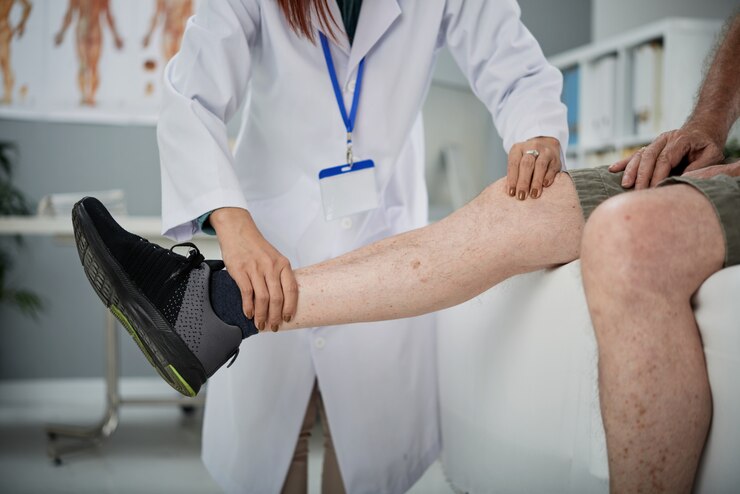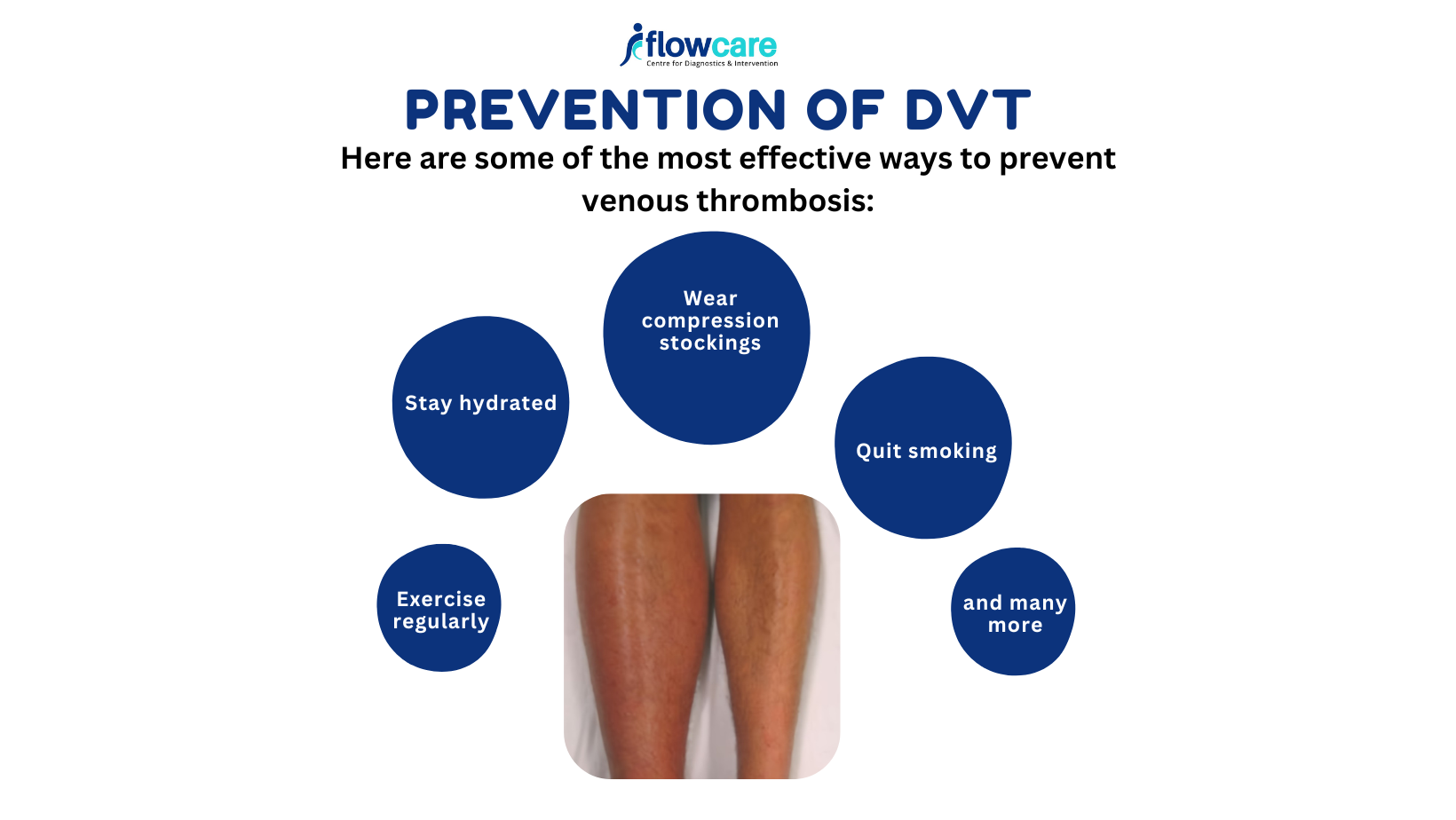Home » Understanding Thrombosis Clinic
Understanding Thrombosis and Expert Care at Dr. Gnaneswar Atturu’s Thrombosis Clinic
Thrombosis is a medical condition where a blood clot forms inside a blood vessel, obstructing blood flow. This condition can have serious consequences if left untreated, including life-threatening complications such as stroke, heart attack, or pulmonary embolism. At the Thrombosis Clinic, Dr. Gnaneswar Atturu, a distinguished vascular and endovascular surgeon, provides expert care and personalized treatment for thrombosis, ensuring effective management and long-term prevention.

What is Thrombosis?
Thrombosis occurs when blood clots form within a vein or artery. These clots can partially or completely block blood flow, causing localized or systemic complications. There are two primary types:
- Deep Vein Thrombosis (DVT): A clot that forms in deep veins, usually in the legs.
- Arterial Thrombosis: A clot that forms in the arteries, potentially leading to conditions such as a heart attack or stroke.
Why Does Thrombosis Occur?
Thrombosis can result from a combination of factors that disrupt normal blood flow, damage blood vessels, or increase blood clotting tendencies. These factors are known as Virchow’s Triad:
1. Reduced Blood Flow:
- Prolonged immobility, such as during long flights or hospital stays.
- Obesity, which can compress blood vessels and slow circulation.
2. Blood Vessel Damage:
- Injury or trauma to blood vessels.
- Inflammation or infection that affects vessel walls.
3. Increased Blood Clotting:
- Genetic clotting disorders (e.g., Factor V Leiden).
- Hormonal changes, such as during pregnancy or with oral contraceptives.
- Chronic conditions like cancer or autoimmune diseases.
Additional risk factors include smoking, age (older individuals are at higher risk), and certain medications.
Symptoms of Thrombosis
The symptoms of thrombosis depend on the type and location of the clot:
Deep Vein Thrombosis (DVT):
- Swelling in one leg or arm.
- Pain or tenderness, often in the calf.
- Red or discolored skin.
Pulmonary Embolism (PE):
- Sudden shortness of breath.
- Chest pain, especially when breathing deeply.
- Rapid heartbeat.
Arterial Thrombosis:
- Sudden, severe pain in the affected area.
- Loss of sensation or paralysis in severe cases.
How is Thrombosis Diagnosed?
Over the recent years, lot many advances are made in the treatment of varicose veins. The type of treatment offered depends on many factors and no single method is the best! Your vascular specialist who is trained in all modalities can guide you to choose the best possible treatment for you!
Dr. Gnaneswar Atturu employs advanced diagnostic techniques to ensure accurate detection and effective treatment planning:
- Doppler Ultrasound: A non-invasive imaging test to visualize blood flow and detect clots.
- CT or MRI Scans: For detailed imaging of arteries and veins, especially in pulmonary embolism cases.
- Blood Tests: To identify clotting disorders and measure D-dimer levels (a marker of clot formation).
Treatment Options at the Thrombosis Clinic
Dr. Atturu provides a wide range of treatment options tailored to the type, severity, and underlying cause of thrombosis:
1. Medications:
- Anticoagulants (Blood Thinners): Prevent new clots from forming and stop existing ones from growing.
- Thrombolytics (Clot Busters): Used in emergency cases to dissolve large clots.
2. Minimally Invasive Procedures:
- Catheter-Directed Thrombolysis: A catheter delivers clot-dissolving medication directly to the site of the clot.
- Venous Stenting: A stent is placed to restore blood flow in cases of chronic vein obstruction.
3. Surgical Interventions:
- Thrombectomy: Surgical removal of a clot in life-threatening situations.
4. Compression Therapy:
- For DVT, compression stockings are used to improve blood flow and reduce swelling.
5. Lifestyle and Preventive Care:
- Weight management, smoking cessation, and regular exercise are emphasized to reduce future risks.
How Dr. Gnaneswar Atturu Excels in Thrombosis Care
1. Expertise and Advanced Techniques:
Dr. Atturu brings years of experience in vascular surgery and endovascular interventions, ensuring precise and effective treatment of thrombosis.
2. Comprehensive Diagnostic Approach:
With access to advanced imaging and testing tools, he ensures accurate diagnosis and a thorough understanding of each patient’s condition.
3. Personalized Treatment Plans:
Every patient receives a tailored treatment plan, considering their medical history, lifestyle, and risk factors.
4. Focus on Prevention:
Dr. Atturu prioritizes educating patients about preventing recurrence, promoting long-term vascular health.
5. Holistic Care:
From initial diagnosis to post-treatment rehabilitation, Dr. Atturu provides compassionate and comprehensive care.
Preventing Thrombosis
Preventing thrombosis involves addressing risk factors and adopting healthy habits:
- Stay active and avoid prolonged immobility.
- Maintain a healthy weight and quit smoking.
- Follow a balanced diet rich in anti-inflammatory foods.
- Regularly monitor your vascular health, especially if you have a family history of clotting disorders.

Why Choose Dr. Gnaneswar Atturu’s Thrombosis Clinic?
Dr. Gnaneswar Atturu’s Thrombosis Clinic offers world-class care with a patient-centric approach. His expertise in vascular medicine, combined with cutting-edge technology, ensures the best outcomes for patients with thrombosis.
Whether you are seeking treatment or preventive care, Dr. Atturu’s clinic is a trusted destination for managing thrombosis effectively and ensuring long-term vascular health.
Take Control of Your Health Today
Thrombosis is a serious condition, but early detection and expert care can prevent complications and save lives. Visit Dr. Gnaneswar Atturu’s website to schedule a consultation and explore personalized treatment options for thrombosis.
Frequently asked questions
Thrombosis is the formation of a blood clot within a blood vessel, which can block blood flow. It commonly occurs in veins (deep vein thrombosis, or DVT) or arteries (arterial thrombosis), leading to serious complications such as pulmonary embolism or stroke.
Thrombosis can occur due to:
- Prolonged immobility or bed rest.
- Blood vessel injuries.
- Increased blood clotting tendencies from conditions like genetic disorders, pregnancy, or cancer.
- Lifestyle factors like smoking, obesity, and lack of exercise.
Common symptoms include:
- Swelling in one leg or arm.
- Pain or tenderness, often in the calf.
- Warmth or redness in the affected area.
However, some cases may have no symptoms.
Dr. Gnaneswar Atturu uses advanced diagnostic methods, including:
- Doppler Ultrasound: To detect clots in veins or arteries.
- CT or MRI Scans: For detailed imaging of blood vessels.
- Blood Tests: To check for clotting abnormalities or markers like D-dimer.
Dr. Atturu employs a combination of approaches:
- Anticoagulants (blood thinners): To prevent clot growth.
- Thrombolytics: To dissolve clots in emergencies.
- Catheter-Directed Thrombolysis: A minimally invasive method to deliver clot-busting medication directly to the clot.
- Surgery: For severe cases where clots need immediate removal.
Untreated thrombosis can lead to:
- Pulmonary embolism (a life-threatening clot in the lungs).
- Stroke or heart attack.
- Chronic pain and swelling (post-thrombotic syndrome).
Early treatment is essential to avoid these complications.
Yes, thrombosis prevention involves:
- Staying active and avoiding long periods of immobility.
- Maintaining a healthy weight and diet.
- Managing conditions like diabetes or high cholesterol.
- Wearing compression stockings during long flights or hospital stays.
Dr. Atturu has extensive experience in vascular and endovascular surgery. His expertise in diagnosing and treating complex vascular conditions, along with his personalized care approach, makes him a highly recommended specialist.
Minimally invasive techniques like catheter-directed thrombolysis are highly effective, offering faster recovery, less pain, and reduced risk of complications compared to traditional surgery.
You should seek immediate medical attention if you experience symptoms such as sudden swelling, severe leg pain, or shortness of breath. Early intervention significantly improves outcomes and prevents complications.

